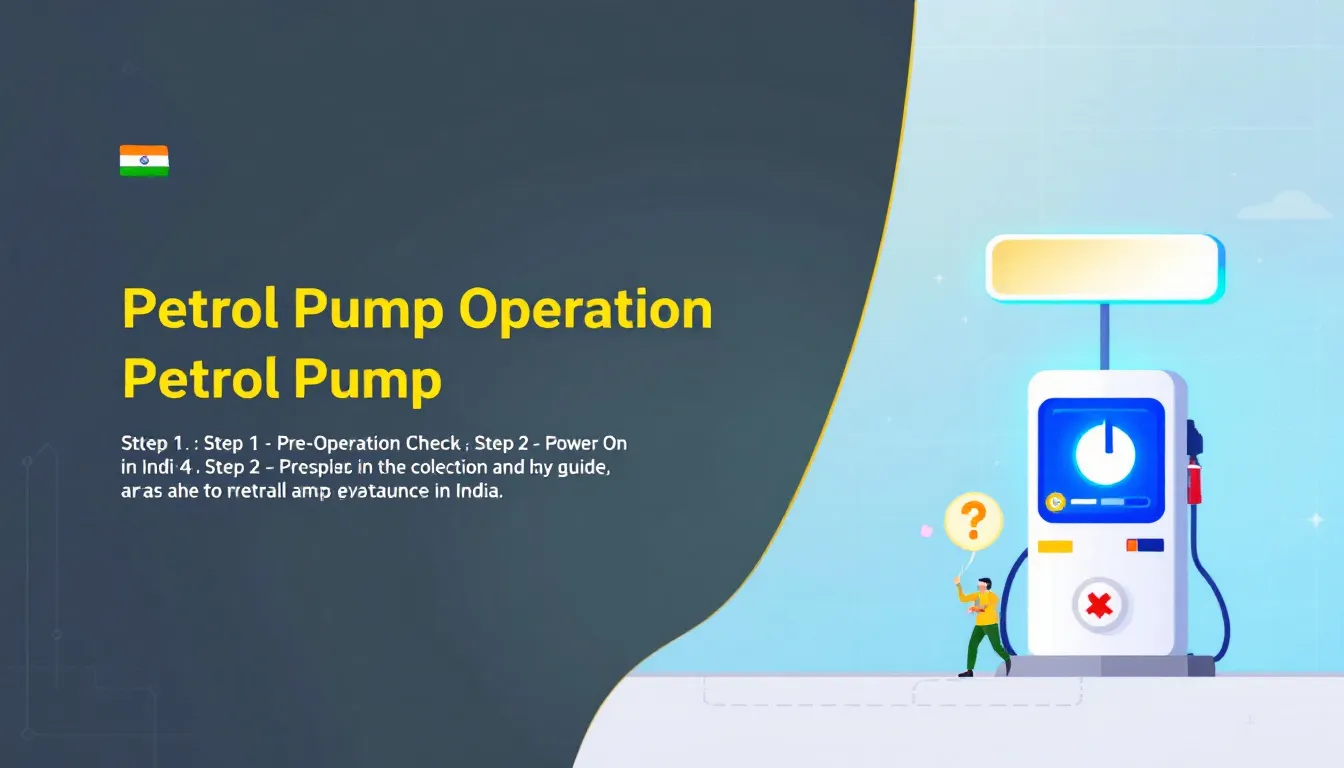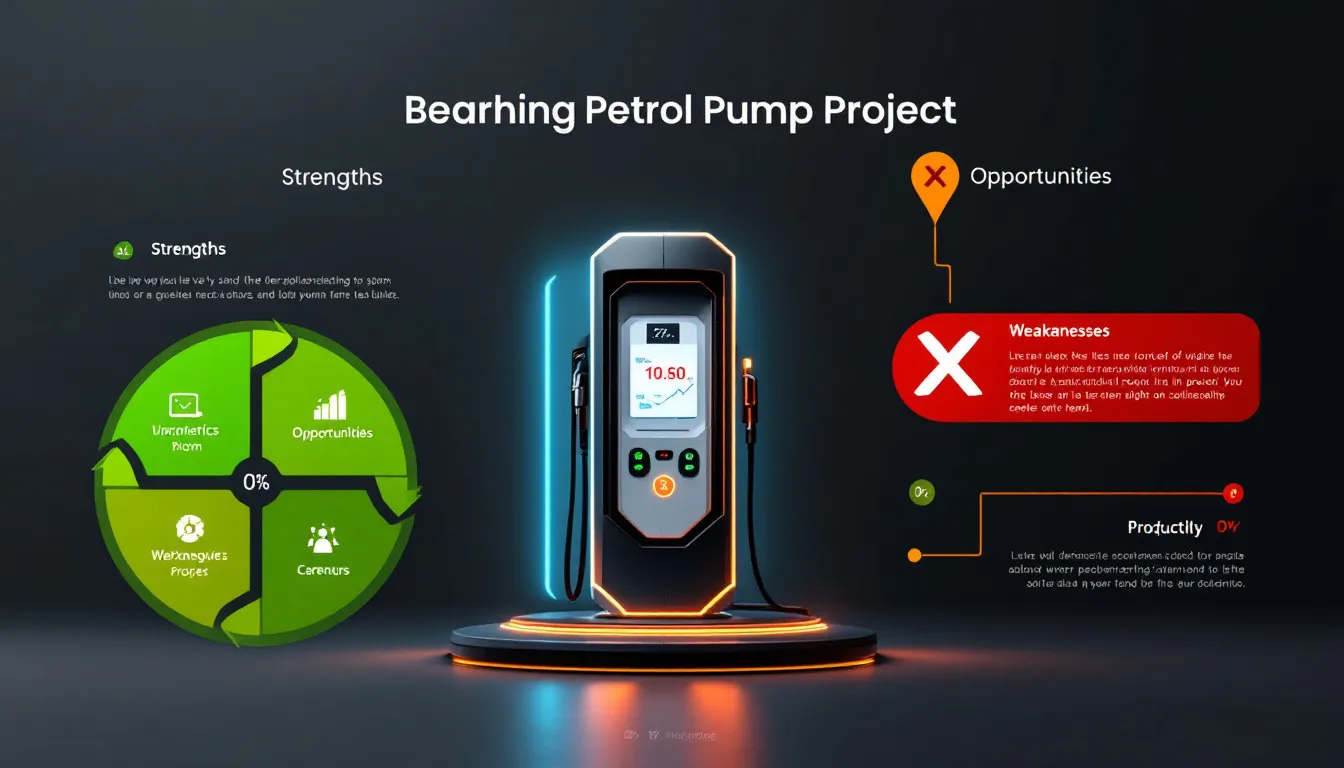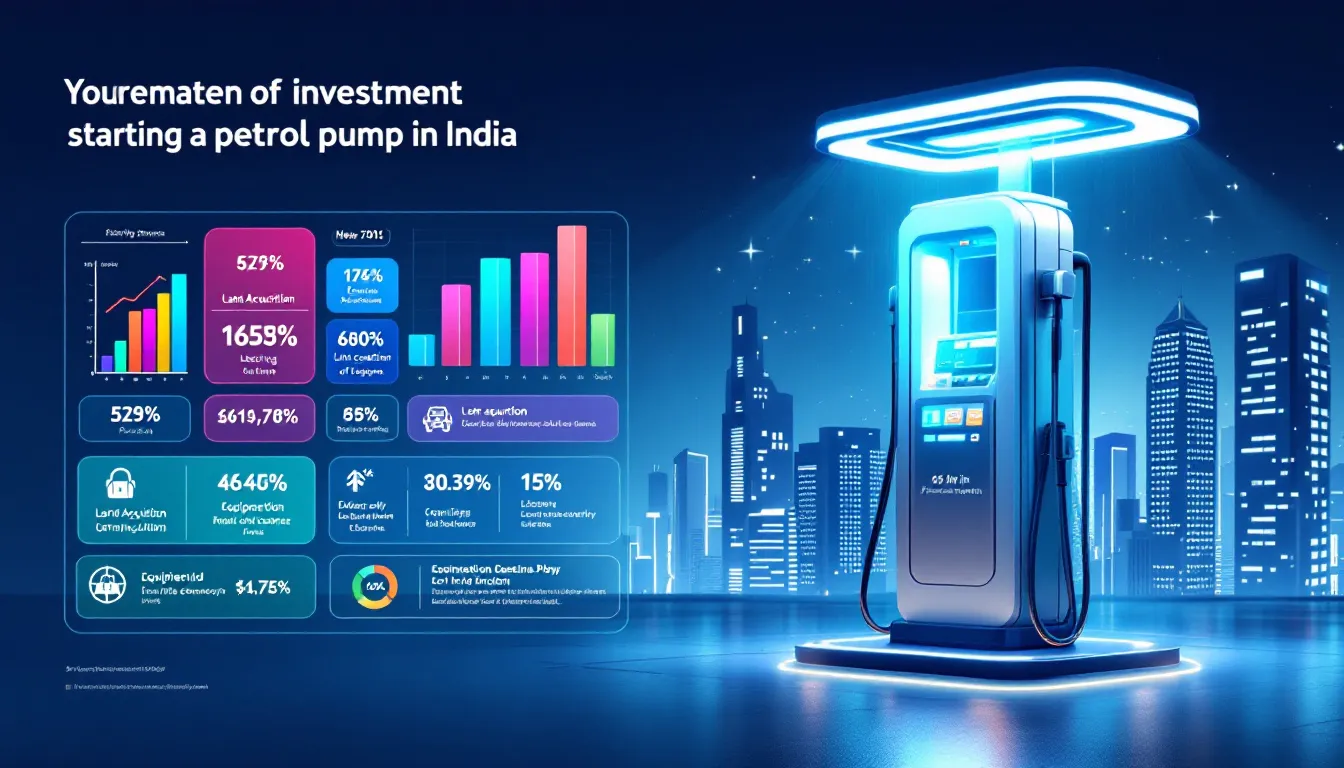Preparing a petrol pump project report is crucial for starting a successful petrol pump business. In this guide, you’ll find everything you need, from understanding the business landscape to obtaining necessary licenses, investment planning, and choosing the right location.
It is also important to adhere to applicable laws when preparing a petrol pump project report.
Key Takeaways
 The demand for petroleum products in India is on the rise, fueled by increased vehicle sales and urbanization. Passenger vehicle sales have seen a significant surge, climbing from 1.98 million in 2008 to 3.78 million in 2021. This growing demand is a clear indicator of the robust potential within the petrol pump business. The Indian petrol station market is projected to grow at an annual rate of over 5% in the coming years, reflecting a resilient recovery from the COVID-19 pandemic.
The demand for petroleum products in India is on the rise, fueled by increased vehicle sales and urbanization. Passenger vehicle sales have seen a significant surge, climbing from 1.98 million in 2008 to 3.78 million in 2021. This growing demand is a clear indicator of the robust potential within the petrol pump business. The Indian petrol station market is projected to grow at an annual rate of over 5% in the coming years, reflecting a resilient recovery from the COVID-19 pandemic.
Moreover, the entry of various global players into India’s fuel retail market is expected to enhance competitiveness, offering more opportunities for new entrants. These dynamics make it an ideal time to open a petrol pump in India, ensuring that you tap into a market that’s both expanding and evolving.
Operating a petrol pump legally requires securing the necessary licenses and permissions. This involves acquiring a petrol pump license, ensuring adherence to safety guidelines. An initial step involves obtaining a Certificate of No Objection (NOC) from the licensing authority. Approval from the Municipal Authority and a fire safety certificate are also necessary for compliance with local regulations and other applicable laws.
Navigating these compliance requirements involves several steps. In rural areas, the form costs Rs 100, whereas in urban areas, it costs Rs 1000. Fill in details such as information provided as name, mark sheet, ID, land details, and upload all required documents on the company’s official website. These steps are crucial to avoid any unauthorized use of intellectual property rights and ensure that your petrol pump operates legally.
Once the license is granted, you’ll need to obtain a GSTIN number for tax purposes and open a current account in the name of the petrol pump. This ensures that all financial transactions are properly managed and compliant with government regulations.
After securing a license, the next step involves obtaining various certificates and permissions before you can start building the infrastructure of your petrol pump. A location certificate is needed to validate the suitability of your chosen site.
Permissions from the fire safety office and the municipal corporation are also required to meet safety standards. A No Objection Certificate (NOC) from the licensing and other concerned authorities is also needed to proceed with construction and operation.
Starting a petrol pump requires a significant investment, typically ranging between Rs. 12 lakh to Rs. 25 lakh. The cost of obtaining a petrol pump license can vary by state and locality, sometimes amounting to several lakhs or even crores. The location of the petrol pump, whether urban or rural, also plays a crucial role in determining the amount of investment required.
Proper financial planning is crucial for successful operations. Account for operational expenses like fuel, other materials, wages, and maintenance. Maintaining a working capital reserve for at least six months is advisable to ensure smooth post-launch operations. Additional resources and financial planning tools can be found on third party web sites.
Securing funding through loans, grants, or partnerships can cover upfront costs, while a cash flow analysis helps anticipate revenue and expenses.
The location of your petrol pump or retail outlet critically impacts its profitability and customer accessibility. Initial setup costs often include land acquisition, varying by location and constituting a significant portion of the total investment.
Land size requirements vary: 500 sq. meters in urban areas for one dispensing unit, while rural areas need at least 800 sq. meters. National highway petrol pumps require even more land, needing 1200 sq. meters for one dispensing unit. The overall land area required to open a petrol pump ranges between 800 and 2,000 square meters, subject to the specific location.
Proximity to roads, traffic patterns, and surrounding demographics are crucial in site selection, as various factors can influence these elements. Urban locations enforce stricter space regulations due to denser populations and infrastructural demands. Features like easy access and additional services can influence customers’ choice of petrol stations.
A comprehensive project report outlines the entire manufacturing process involved in fuel distribution. Include a production chart that details expected output and operational timelines. The report must specify the types and sources of fuels and other supplies needed for operations.
Document the machinery required, including dispensers and storage tanks. A thorough market demand analysis assesses the viability and potential customer base.
 Conduct a feasibility study to evaluate the potential market and profitability before establishing a petrol pump. Advertise offers and submit an application online, selecting a company and area, and paying a fee. Essential licenses from Oil Marketing Companies (OMCs) are required to operate a petrol pump. The cost for applying for a petrol pump license varies, with urban areas generally being more expensive than rural ones.
Conduct a feasibility study to evaluate the potential market and profitability before establishing a petrol pump. Advertise offers and submit an application online, selecting a company and area, and paying a fee. Essential licenses from Oil Marketing Companies (OMCs) are required to operate a petrol pump. The cost for applying for a petrol pump license varies, with urban areas generally being more expensive than rural ones.
Emergency management plans are crucial for addressing potential accidents and ensuring rapid response during crises. Regular mock drills and risk assessments test and enhance the effectiveness of safety measures.
Strict safety protocols are paramount in the petrol pump business. Regular safety audits and compliance checks help identify and mitigate hazards. Fire protection should include fixed and mobile firefighting equipment, with dedicated personnel for emergencies. Personal Protective Equipment (PPE) usage is mandatory for station personnel to ensure compliance with safety regulations and minimize risk.
Regular equipment maintenance is vital for efficiency and safety, despite the cost. Effective cash management systems mitigate risks associated with high-volume cash transactions.
 Petrol pumps are classified into full-service and self-service types. Full-service petrol pumps offer personal service with attendants handling the refueling process. While convenient, it can increase operational costs.
Petrol pumps are classified into full-service and self-service types. Full-service petrol pumps offer personal service with attendants handling the refueling process. While convenient, it can increase operational costs.
Self-service options are quicker and more efficient for drivers, who avoid additional charges by handling refueling themselves.
Applicants for a petrol pump license must be Indian citizens aged 21 to 55. General category applicants need to have completed at least 12th grade, while SC/ST/OBC categories are required to have passed 10th grade.
Urban applicants need a diploma in engineering or a degree in fields of financial capability like cost accounting or chartered accountancy. Eligible applicants must provide valid identity documentation as proof of Indian citizenship.
A robust marketing plan is key to the success of a petrol pump business. Petrol stations must adapt to new business opportunities, including electric vehicle charging. Targeted digital advertising can effectively reach specific customer demographics, ensuring businesses a steady stream of customers. Additionally, maintaining a presence on various party web sites is crucial for effective digital advertising.
Discounts and promotions can attract customers and encourage additional purchases, while community events can enhance engagement and foster loyalty. Excellent customer service generates repeat business and positive referrals.
Monitoring industry trends and customer feedback is vital for adapting and thriving in a competitive market.
Operating a petrol pump presents its own challenges. Fluctuating fuel prices can affect profitability, requiring operators to adapt to market demand changes. Sustainable practices are crucial for addressing environmental concerns and gaining customer trust.
Fuel theft is a critical issue that can cause financial losses and environmental harm. Robust security measures and regular audits can mitigate this risk.
Petrol pumps in India offer various petroleum products for different vehicle needs. These include normal petrol, used for spark-ignition internal combustion engines like bicycles, auto-rickshaws, and cars.
Branded petrol, preferred by new generation vehicles, contains additives to optimize performance and is sold under names like “Power”. Ethanol-blended petrol is also marketed in compliance with government notifications.
High-Speed Diesel (HSD) is another essential product available at petrol pumps. HPCL offers two types of diesel nationwide: normal diesel for heavy commercial vehicles like tractors, pump sets, buses, and motor cars, and branded diesel with multi-functional additives for new generation vehicles, sold under names like “Turbojet.”
Lubricants are essential for maintaining engine health. Petrol pumps provide a range of lubricants for different engines, gearboxes, and components, ensuring smooth functioning and longevity.
Compressed Natural Gas (CNG) is an eco-friendly fuel available at selected outlets in major cities, based on grid and gas availability. Vehicles require a special kit to use CNG, making it a viable option for environmentally conscious consumers.
Land requirements for setting up a petrol pump in India vary by location. Urban areas typically require 500 sq. meters for one dispensing unit, while rural areas need at least 800 sq. meters. Highway locations require even more space, at 1200 sq. meters.
Proper documentation and verifying road accessibility are crucial steps in ensuring land legality.

Apply for a petrol pump dealership by responding to advertisements issued by Oil Marketing Companies (OMCs) on their official websites or newspapers. The application process includes registering online, selecting a company and area, and paying a fee. Ensure the proposed location is included in the company’s Marketing Plan and deemed feasible by a field team.
The selection process often uses a lottery system for numerous applicants. Detailed guidelines for dealership selection are available on the corporate websites of oil companies, with additional assistance from local Retail Divisional Offices or Field Officers.
Profit margins for petrol pump dealers in India are relatively low, with dealers earning approximately Rs. 2 per liter for diesel and Rs. 3 per liter for petrol.
However, low-volume dealers may receive an increase in commission.
Despite the low profit margins, owning a petrol pump can be profitable due to the consistent demand for fuel. Revenue from a well-managed petrol pump can include commissions from fuel sales and transportation, potentially reaching around Rs. 9.7 Lakhs monthly. Additional revenue streams such as convenience stores, service stations, and loyalty programs can enhance profitability.
However, challenges like the rise of electric vehicles and mobile fuel delivery services pose long-term threats to the traditional petrol pump model. Managing operational costs, including rents, salaries, utilities, and maintenance, is crucial for maintaining profitability.
Choosing the country with best petrol pump can be subjective, but some of the top companies in India include Hindustan Petroleum, Indian Oil Corporation, Essar Oil, Reliance Petroleum, Rosneft, and Shell.
Transferring the ownership of a running petrol pump requires applying for reconstitution at your territory or regional office using a prescribed application form and submitting all required documents.
Direct transfer of the license is not permitted.
 The investment required to start a petrol pump in India depends on the location and scale of operations. Urban areas typically require a minimum investment of Rs. 2 crores, while rural areas need at least Rs. 15 lakhs. The total setup cost can range from Rs. 25 lakhs to over Rs. 1 crore, including expenses for construction, equipment, and licensing fees.
The investment required to start a petrol pump in India depends on the location and scale of operations. Urban areas typically require a minimum investment of Rs. 2 crores, while rural areas need at least Rs. 15 lakhs. The total setup cost can range from Rs. 25 lakhs to over Rs. 1 crore, including expenses for construction, equipment, and licensing fees.
Operational costs such as rent, utilities, and employee wages should also be factored into the overall financial planning for a petrol station. For a small to medium-sized petrol station, the initial investment may be around Rs. 30-50 lakhs.
Starting a petrol pump in India requires several documents, including proof of land ownership or a lease agreement, a land use certificate, and a PAN card. Identity verification documents such as an Aadhar card or passport are also required. GST registration certificate and recent bank statements are needed as part of the application.
Additional documents include income tax returns from previous years, a No Objection Certificate from local authorities, fire safety clearance, environmental approvals, and approval from the Petroleum and Explosives Safety Organization (PESO).
A layout plan of the petrol pump site and site approval plan from concerned authorities must be submitted, along with a character verification certificate for the applicant owners and partners. Specific approvals from oil marketing companies (OMCs) must also be obtained. These documents can be found and submitted on the official web sites of the relevant authorities.
The term “petrol bunk” is commonly used in some regions to refer to a petrol pump. While there is no specific meaning behind the term, it is believed that the word “bunk” refers to a cabin or ship bed.
Since petrol is stored in bunker-shaped containers, people may have started calling it a petrol bunk instead of a petrol pump.
Starting a petrol pump in India involves a comprehensive understanding of the business landscape, obtaining necessary permissions and licenses, and making significant financial investments. Selecting the right location, preparing a detailed project report, and adhering to operational guidelines and safety measures are crucial steps in the process.
By following the tips and guidance provided in this blog post, you can navigate the complexities of setting up a petrol pump and position yourself for success in this thriving industry. With careful planning and execution, your petrol pump can become a profitable venture, catering to the ever-growing demand for fuel in India.
To set up a petrol pump in India, you will require a petrol pump license, a Certificate of No Objection (NOC), approval from the Municipal Authority, and a fire safety certificate. Ensuring compliance with these key permissions is essential for a successful establishment.
To start a petrol pump in India, an investment ranging from Rs. 12 lakh to Rs. 25 lakh is required, influenced by the location and scale of operations.
Petrol pumps are primarily categorized into full-service and self-service types. Full-service pumps offer personal assistance for refueling, whereas self-service pumps enable customers to fill their vehicles independently.
The profit margin for petrol pumps in India is approximately Rs. 3 per liter for petrol and Rs. 2 per liter for diesel. This indicates a relatively low profit margin in the fuel retailing sector.
The land requirements for establishing a petrol pump in India vary by location: urban areas need a minimum of 500 sq. meters, rural areas require land requirement at least 800 sq. meters, and highway locations mandate 1200 sq. meters. It’s essential to consider these specifications to ensure compliance and successful operation.